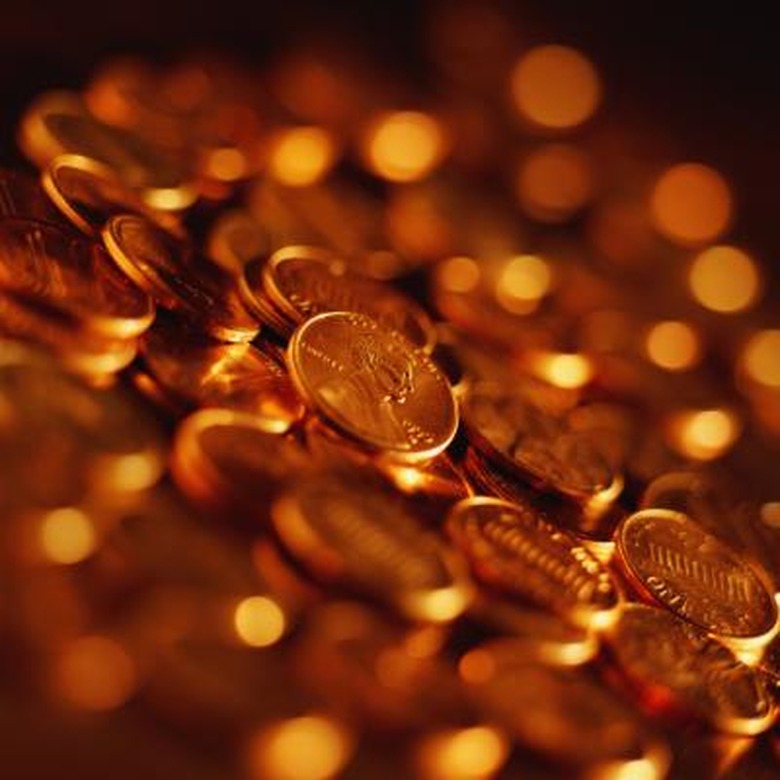Penny Science Fair Project Ideas
Trying to come up with project ideas for the annual school science fair can seem challenging, but it's important to remember that the winning entries aren't always the most complex. For some surprisingly insightful and educational project ideas, look no further than your nearest piggy bank. There are some great science fair project ideas that you can do with pennies!
Cleaning Pennies
Cleaning Pennies
As pennies age, they become discolored and appear dirty. This is because of a chemical process called oxidization, and the dark color is because of copper oxide. You can easily remove this copper oxide by soaking pennies certain solutions, such as lemon juice or vinegar, which are very acidic. Kids can test which liquids best clean pennies by filling cups or glasses with equal amounts of various substances, including juices, soda, vinegar, salt water or even ketchup, and soak pennies for a specific length of time in each. Use litmus paper to test the pH of each, and use these results to infer why some clean pennies better than others.
Copper Plating
Copper Plating
Just as copper oxide can be removed from pennies, it can be used to plate other metal objects, such as paper clips or iron nails. To do this, place pennies in a solution of salt and vinegar. You should notice the pennies becoming brighter and shinier in a matter of minutes. When most of the discoloration is gone, remove the pennies and set them to dry on a paper towel. Dip a paperclip or iron nail into the water for a few moments and watch what happens. The copper oxide will attach itself to the metal, "plating" it (though it probably will easily rub off). Experiment with different variables, such as strength of the solution, time pennies soaked and even age of pennies (as pennies made before 1982 contained more copper) and note any differences.
Drops on a Penny
Drops on a Penny
How many drops of water do you think a penny can hold? Get a dropper and some water and find out. The answer may surprise you. A phenomenon known as "surface tension" causes water droplets to cling to one another, so the water holds together in a bulge atop the coin before spilling over. Test several times to get an average of how many drops of water a penny can hold. Then, experiment with liquids of different thicknesses, such as milk and syrup, to see how the number of drops may change.
Pennies in Liquids
Pennies in Liquids
Another way to test surface tension is to fill a glass or cup to the rim (make sure the rim is dry, so water won't dribble down the side), and see how many pennies you can drop in before the container overflows. Again, try different liquids to see how thickness affects results.
References
Cite This Article
MLA
Shelton, Anne. "Penny Science Fair Project Ideas" sciencing.com, https://www.sciencing.com/penny-science-fair-project-ideas-5942060/. 21 July 2017.
APA
Shelton, Anne. (2017, July 21). Penny Science Fair Project Ideas. sciencing.com. Retrieved from https://www.sciencing.com/penny-science-fair-project-ideas-5942060/
Chicago
Shelton, Anne. Penny Science Fair Project Ideas last modified August 30, 2022. https://www.sciencing.com/penny-science-fair-project-ideas-5942060/



